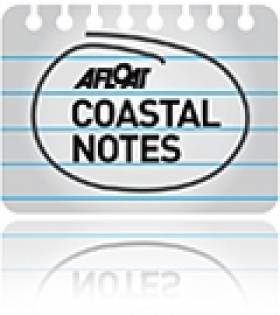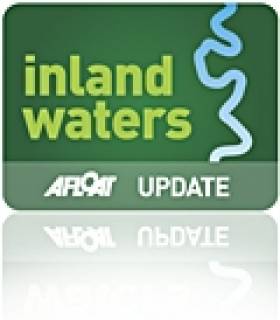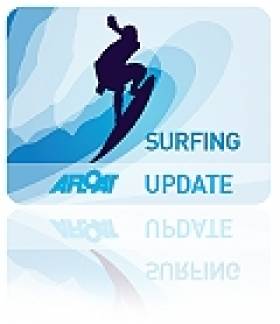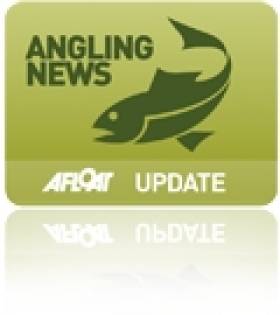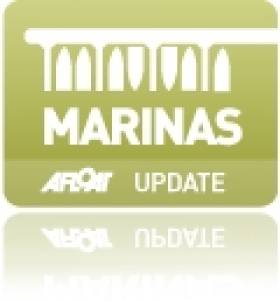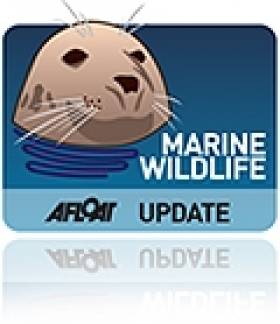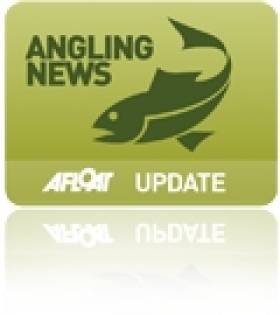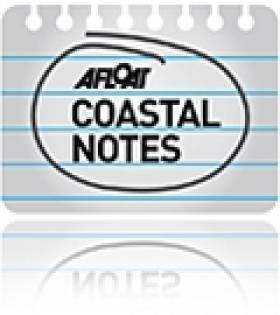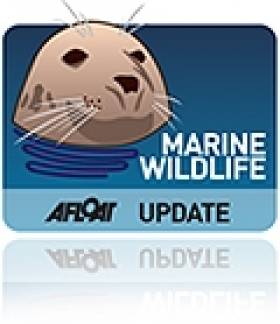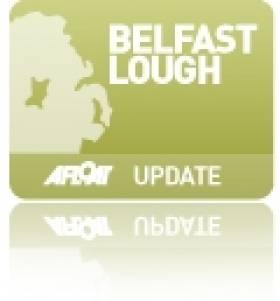Displaying items by tag: Northern Ireland
Ireland to Get First 'Energy Bank' Beneath NI Lough
#COASTAL NOTES - The first ever 'energy bank' on this island will be constructed deep beneath a coastal lough in Northern Ireland, as the Irish Independent reports.
Some 500 million cubic metres of gas are set to be stored in salt caverns a mile under Larne Lough on the north Antrim coast, after NI Environment Minister Alex Attwood have his go-ahead for the project earlier today.
The Belfast Telegraph reports that site preparation work will begin before the end of this year on the expected seven-year construction scheme.
The €492.5-million gas storage facility is expected to hold a 60-day supply to create a buffer against increasing energy price rises.
"This security of supply of energy will be a significant step forward in the way we manage our energy sector," said Minister Attwood. "North Sea gas supplies are declining steeply and this facility will make a significant contribution to the security of gas supplies for the whole island of Ireland and indeed for Britain."
Meanwhile, environmentalists have voiced concerns over the planned disposal of salt from the caverns into the sea, and its potential to cause harm to marine wildlife and biodiversity.
Though Minister Attwood said he was conscious of environmental concerns, James Orr of Friends of the Earth argued that the dumping of hypersaline salt solution "will kill or be seriously detrimental to the development of larval stages of fish and crustaceans", and that Northern Ireland should rather be investing in renewable energy.
The Belfast Telegraph has more on the story HERE.
Green Light for New Cross-Border Bridge Near Carlingford Lough
#INLAND WATERWAYS - RTÉ News reports that An Bord Pleanála and NI Environment Minister Alex Attwood have granted planning permission for a new cross-border bridge spanning the River Newry near Carlingford Lough.
The single carriageway cable bridge will be 660 metres in length, with most of the funds required being sought from the EU`s €30 million fund for development in border regions. It is hoped to be completed and open to traffic by 2015.
The bridge will cross the river at Narrow Water, an area once notorious for an IRA ambush in 1979 that saw 18 British soldiers killed in a series of explosions.
It will also be able to open to allow tall ships and other vessels to access Victoria Lock and Albert Basin in nearby Newry.
Quoted in the Irish Independent is Pamela Arthurs, who helped lead the project on behalf of both Louth and Down county councils, who said the bridge was first mooted as far back as 1976.
"This has been a major project but it is not just about the fact that we will have a bridge, it is what it symbolises in how far we have come as a country," she said.
Minister Attwood also hailed the project as improving accessibility in a region of substantial natural beauty.
"It will be a great economic boost for the area, creating construction jobs in the short term, enhance tourism and promote greater community interaction across the border," he added.
The Irish Independent has more on the story HERE.
Up Close and Personal with NI Big Wave Surfer Al Mennie
#SURFING - Top press photographer Charles McQuillan recently travelled to Northern Ireland to capture big wave surfing pro Al Mennie in training for the winter season, as The Irish Times reports.
McQuillan set out to document every aspect of Mennie's surfing life on the north Antrim coast, from the pre-dawn starts and protein-heavy breakfasts to the gruelling solo training sessions and the thrill of the surf itself.
And he made sure to get up close and personal with his subject, using waterproofing equipment to photograph him underwater - and even following him on a jet-ski to the secret offshore surfing spots known only to Mennie and his fellow big wavers.
The snapper described the surfer as "incredibly at home" in the water. Not surprising for a man used to taking on the enormous Finn McCool swells off the Giant's Causeway, or paddling across the North Channel for charity as he did this past spring (see more pics of Mennie surfing HERE).
As Mennie tells the Belfast Telegraph, he has the good fortune to be able to ride “the biggest, scariest waves on the planet” in his own backyard.
It comes at a price - Mennie must be in peak physical condition at all times, as one never knows when the big one might come - but it's a price he's more than willing to pay, with his body and his mind.
“Big-wave surfing is at least 80 per cent to do with your mind, and the physical aspect boosts the mental side," he tells The Irish Times. "I don’t feel 100 per cent in myself unless I’m training properly.”
Meanwhile, The Irish Times also highlights the best places to get your wetsuit on and go surfing in Ireland during the increasingly popular winter season, with schools in the hotspots of Lahinch in Co Clare - the focus of a new book by journalist Keith Duggan - and Bundoran, Co Donegal upgrading to meet the demand.
And even if its waves aren't up to scratch, the east coast still is getting some of the action, with stand-up paddleboarding (SUP) becoming the latest way to ease into the sport.
NI Anglers Opposed to Exclusive Protected Status for Farmed Salmon
#ANGLING - Northern Ireland anglers have balked at proposals to secure protected region of origin status for 'Irish salmon' so that only farmed salmon can use the name.
As the Belfast Telegraph reports, the Ulster Angling Federation (UAF) has lodged an objection to the application for protected geographical indication (PGI) status, of the kind that protects the names of foods and drinks like Champagne and Parmesan cheese.
NI anglers argue that the term 'Irish salmon' has been seized by the aquaculture industry "to create the illusion that consumers are receiving a wild Irish product".
UAF chair Jim Haughey suggests that the name be amended to 'Farmed Salmon from Ireland'.
New Facilities for Stranraer Marina Hoped to Boost Numbers
#MARINAS - The new shore block at Stranraer Marina is the latest project to benefit from the Sail West initiative across western Scotland, Northern Ireland and the northwest coast of Ireland.
As the Galloway Gazette reports, the new waterfront building comprises a permanent harbour office, coastguard base, showers and toilets, as well as a community education room.
“The ongoing development of the marina is key to branding Stranraer as a marine leisure destination," said local councillor Roberta Tuckfield.
"Plans to add more pontoons and another breakwater should bring in additional pleasure craft, increasing tourism numbers benefiting the whole town.”
The marina improvements have been made with the goals of boosting the number of marine leisure users in Stranraer, fitting in with Sail West and its cross-border MalinWaters marine tourism brand across the channel.
Sail West is an international scheme, headed by Donegal County Council and Larne Borough Council, which aims to encourage mariners to enjoy the North Channel coastlines of Scotland, Ireland and Northern Ireland.
Other projects recently supported under the rubric of the Sail West initiative include the new coastal marina facility at Ballycastle Harbour in north Antrim and this summer's Clipper Festival in Derry.
The Galloway Gazette has more on the story HERE.
Irish Whale and Dolphin Group Appoints Three New Officers
#MARINE WILDLIFE - The board of directors of the Irish Whale and Dolphin Group (IWDG) has announced the appointment of three new officers to cover the roles of conservation, Northern Ireland and the Irish language.
The new IWDG conservation officer is Dr Joanne O’Brien, a postdoctoral researcher and lecturer at the Galway-Mayo Institute of Technology (GMIT).
Dr O'Brien lectures on the Applied Freshwater and Marine Biology degree. She has been working on cetaceans (whales, dolphins and porpoise) since 2004 and completed a PhD on small cetaceans off the west coast of Ireland in 2009.
She is particularly interested in acoustic monitoring and is currently principal investigator on an EPA-funded project exploring ocean noise and its impact on marine wildlife.
Padraic de Bhaldraithe is the new IWDG Irish language officer, following stints in postgraduate research in biological oceanography in Galway and in the Centre Nationale de l’Exploration des Océans in Brest, France.
After teaching in a second-level school for 10 years, he joined the inspectorate of the Department of Education and subsequently seconded to the State Examinations Commission where he was the chief examiner for Biology.
De Bhaldraithe has been a member of the IWDG for a number of years. He is also a keen sailor – and a founding member of the Galway Hooker Association – and currently works as a freelance translator.
The third appointee is Zoë Stevenson, the new Northern Ireland officer. She recently graduated from Swansea University and her passion for whales and dolphins have taken her all over the world. She’s seen humpback whales in Costa Rica, Hector’s dolphins in New Zealand and fin whales in Italy, just to name a few.
The IWDG will soon be appointing three more officers to the areas of welfare, education and science.
Northern Ireland Wild Salmon Stocks 'Around Dodo Levels'
#SALMON THREAT - Just three out of every 100 wild salmon returned to Northern Ireland's rivers last year - prompting concerns that the species has declined past the point of no return, as the Belfast Telegraph reports.
Following a recent meeting of the Stormont culture, arts and leisure committee where the issue was discussed, South Belfast MLA Michael McGimpsey shared his belief "that the public do not appreciate just how precarious the situation is.
"It is estimated that 1,000 to 1,500 salmon return to Northern Ireland each year to spawn. Of these, half are wild salmon and the other half locally hatched salmon.”
McGimpsey said it is "beyond question that there has been a serious collapse in local wild salmon numbers and this is a situation which has implications, not just for local anglers but for our tourist industry."
Claiming that NI's wild salmon stocks are now "around dodo levels", he demanded "totally drastic action in and around salmon" to ensure the species' future.
Earlier this year, as previously reported on Afloat.ie, Northern Ireland's Department of Culture, Arts and Leisure (DCAL) has called for a voluntary ban on offshore salmon fishing.
The move to stop issuing licences for commercial salmon nets that may "contravene European law" off Antrim's north coast was welcomed by river angling campaigners NoSalmonNets, who have been using social media to promote their cause.
Meanwhile, DCAL insists that any court action from salmon netters who may challenge the ban "should not prove an obstacle" to extending the salmon stock preserving measures. Proposals will be put to the minister by the end of this month with a view to enacting legislation next year.
The Belfast Telegraph has more on the story HERE.
'Surfers Against Sewage' Tour Hits Northern Ireland Next Week
#COASTAL NOTES - Surfers Against Sewage will be taking their environmental education programme to Northern Ireland next week, as online surfing magazine Drift reports.
The team are set to visit up to 15 schools, universities, youth groups and sports clubs in coastal communities across Scotland and Northern Ireland in a whistle-stop five-day tour from 1-15 October.
The sessions will give all involved information on the threats facing their local beaches and coastlines from littering and pollution, and what action students can take against them.
Lessons cover Surfers Against Sewage's campaigns on sewage pollution, marine litter, climate change, toxic chemicals, shipping and wave protection - and feature and interactive environmental board game called Marineopoly where students can put into practice what they've learned.
Drift has more on the story HERE.
NI Seal Death Prompts Investigation
#MARINE WILDLIFE - An investigation is underway to determine the cause of death of a seal found on a Derry beach this week.
As UTV News reports, the seal was found on Castlerock strand on Wednesday afternoon, and local reports suggest it suffered a gunshot wound to the head.
In a statement, the Northern Ireland Environment Agency (NIEA) confirmed that the carcass had been removed for a postmortem to determine the cause of death, and that the PSNI has also been made aware of the matter.
As previously reported on Afloat.ie, the Dingle Seal Sanctuary commented on what it saw as a "swing in activity" in illegal seal killings around Ireland earlier this year - following a shocking incident at the sanctuary in June.
Meanwhile, Northern Ireland's Green Party warned in March that "rogue" anglers in Co Down may shoot seals they accused of consuming their fish stocks, after the protected marine wildlife managed to enter a section of the River Quoile.
Record Year for Cruise Visits in Belfast
#BELFAST LOUGH - Belfast may no longer be building ships but it's certainly attracting them as 2012 marks a record year for luxury cruise ship numbers, according to BBC News.
Nearly 80,000 passengers and crew from 111 different countries have come through the city's port via 43 cruise liners since the start of this year's cruise season - and more than 50 are expected to sail into Belfast Lough in 2013.
Northern Ireland's tourism hotspots are the big attraction for most, from the world-renowned Giant's Causeway to the new Titanic Belfast visitor centre - but curiosity is also a big driver.
"A lot of people are curious about Belfast and Northern Ireland," said Gerry Lennon of the Belfast Visitor and Convention Bureau. "The political stability has given us that ability to go to the market-place and now say 'look what we have to offer'."
BBC News has much more on the story HERE.

